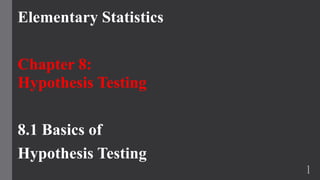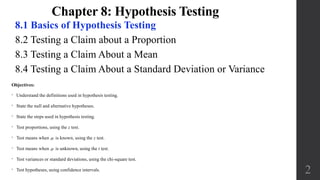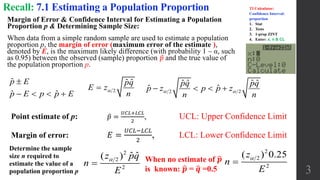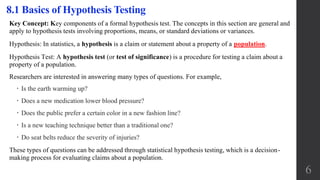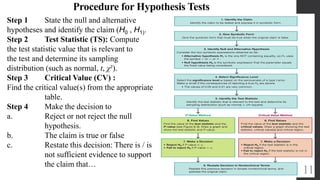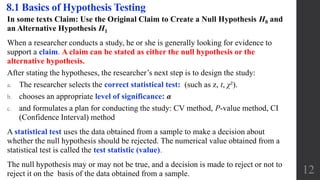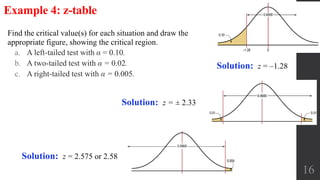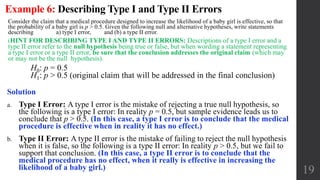- Hypothesis testing involves evaluating claims about population parameters by comparing a null hypothesis to an alternative hypothesis.
- The null hypothesis states that there is no difference or effect, while the alternative hypothesis states that a difference or effect exists.
- There are three main methods for hypothesis testing: the critical value method which separates a critical region from a noncritical region, the p-value method which calculates the probability of obtaining a test statistic at least as extreme as the sample test statistic assuming the null is true, and the confidence interval method which rejects claims not included in the confidence interval.
- The steps of hypothesis testing are to state the hypotheses, calculate the test statistic, find the critical value, make a decision to reject
